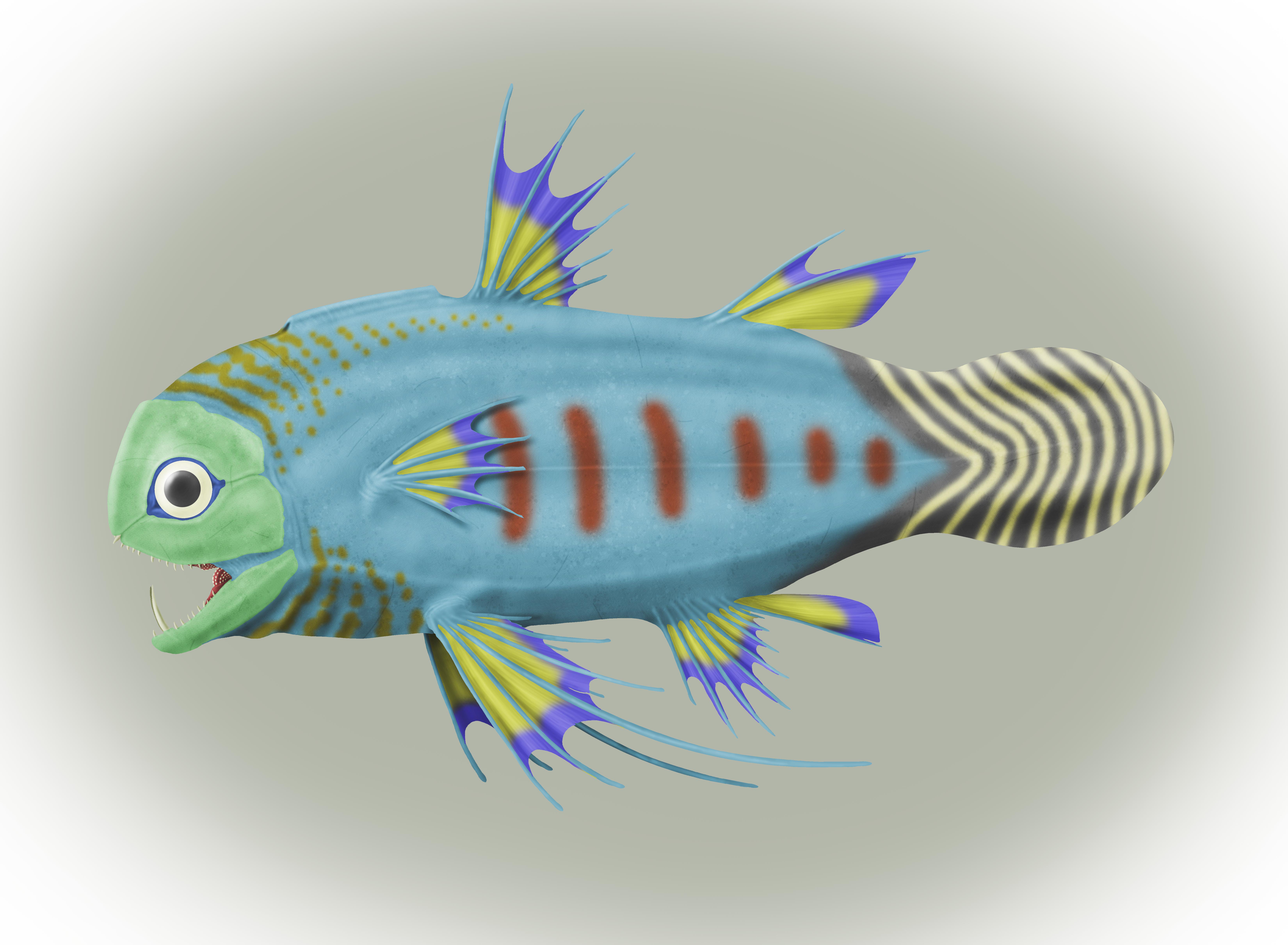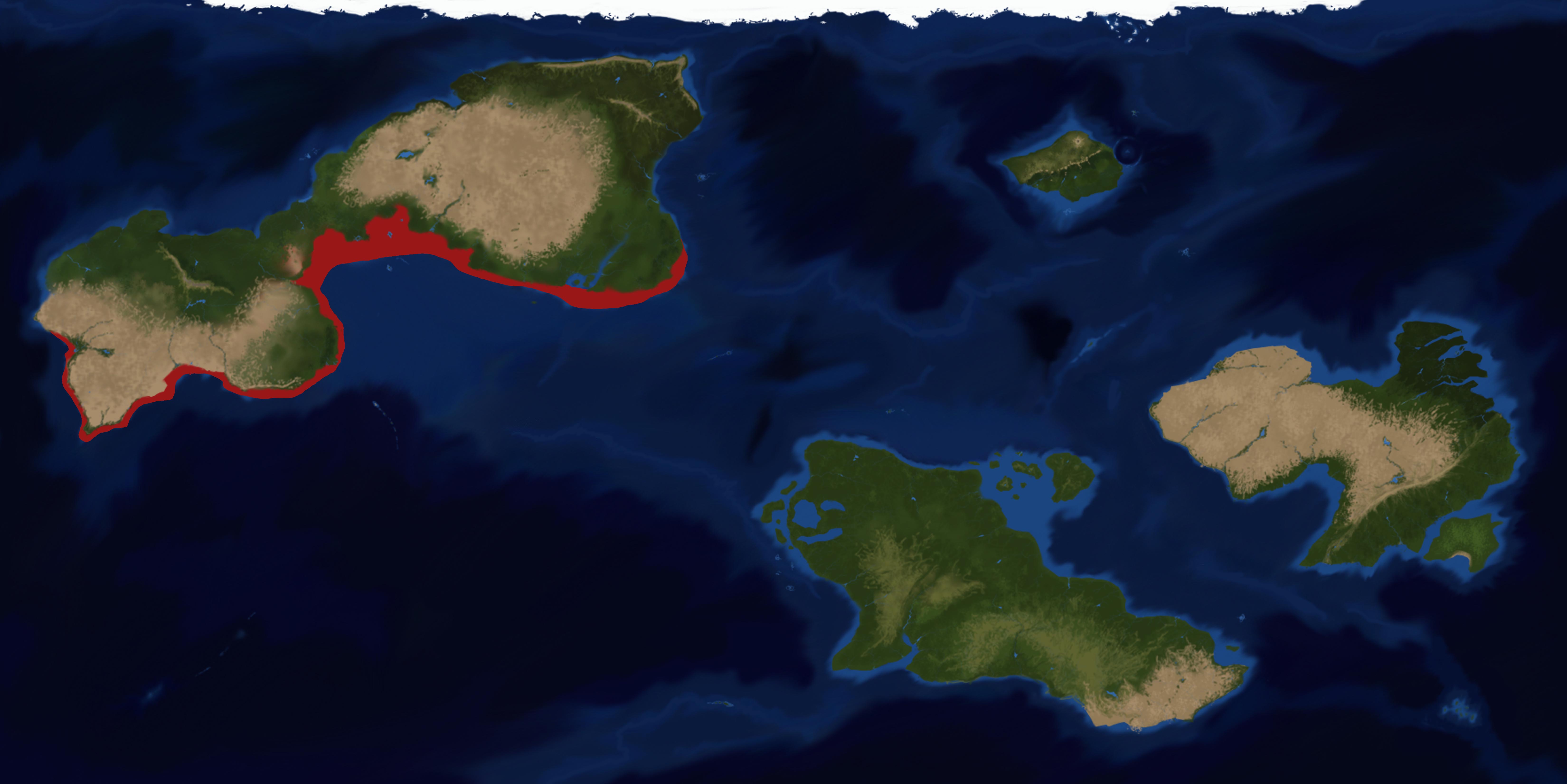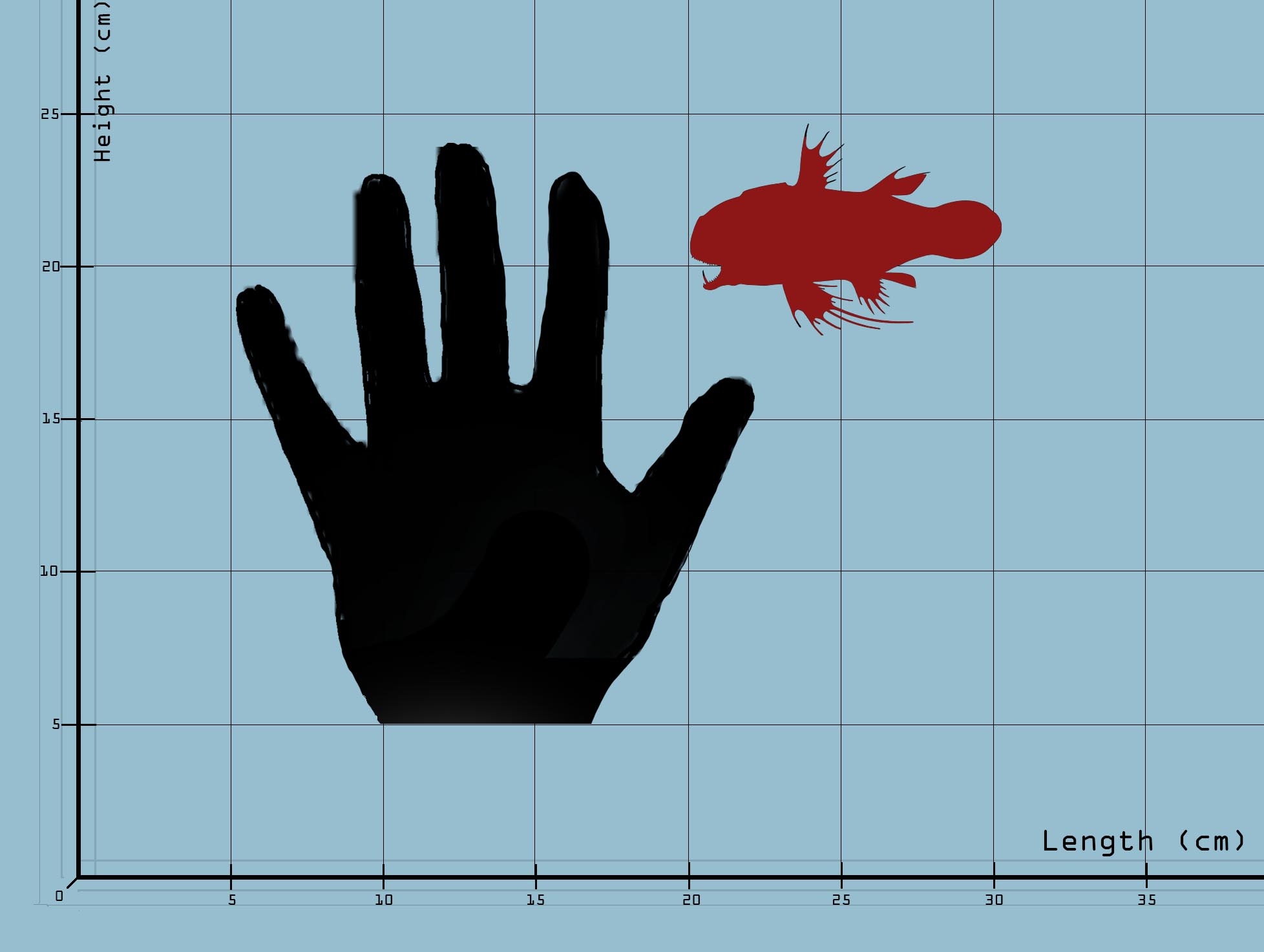Aegyptian Snake-Jetter
Paracaligoserpens aegyptipictus is a species of Dibelodontid Ampliventeroid amphibian of the northern Tropical Belt and Gulf Sea.
Possibly among the smallest Pressionatatids on the planet, the species lives in large groups in tropical waters and reefs, finding shelter among the under-reef and in the underbrush of tropical forests.
The animal feeds mostly on small invertebrates and encrusting organisms it scrapes away from surfaces with the distal section of the jaw, helping most of the plants of their native range to stay clean of parasites.
With a quite extended range, the species divides into several subspecies, each adapted to their local lifestyle; the type species, Paracaligoserpens aegyptipictus aegyptipictus (pictured above) is adapted to live in the under-reef of the Gulf Sea and other neighbouring coralline reefs, having a brighter patterning and living most of its life in the under-reef, only rarely leaving its protective embrace.
The western subspecies, Paracaligoserpens aegyptipictus occidentalis, is the largest, reaching up to 20 cm in length and living a more active lifestyle, hunting bigger prey; the colouration of this bigger subspecies is much duller and green, made to better camouflage against the large kelp and other such green plants.
A third major subspecies is found on the south-eastern coast of Yan, Paracaligoserpens aegyptipictus yanensis is sized around 12/15 cm and are muddy coloured to camouflage with the sediment coming from the Fjord's mouth, where they are found; this subspecies feeds on small burrowing Iron-mussels and other invertebrates of the benthos.
The species' adapted the pressure jet to move in small and weak bursts, giving them a slower swim speed but higher manoeuvrability, making them especially fit for their lifestyle, giving them the ability to move around in thick foliage with ease.
Unlike other Pressionatatids, the species has highly developed fin membranes, giving it the ability to swim through fin propulsion as well, instead of having to mostly rely on the pressure jet for faster swim speeds.
Most subspecies are least concern, however, a few have become threatened in recent years as their natural habitats shrink due to anthropization and usage of their territories for algal agriculture.
Although most of the major subspecies can be found in the market sold as pets, the type species is the most sold among them due to the brighter colours.
The animal can also be found sold in food markets in bulk to be fried and eaten whole.
Basic Information
Anatomy
- Head short and rounded, eyes very large.
- Two large teeth extending from the distal section of the dentary bone outwards the mouth, at a slight angle.
- Reduced Pressure jet.
- Fin membranes very developed for a pressionatatid.
- Pectoral fin with five digits.
- Anal I fins six digited, Anal II nine digited.
- Dorsal I fin six digited, Dorsal II only two digited.
- Gill Tail short and high.
- Gill Fan short and round, with a steep and rounded caudal drop.
Genetics and Reproduction
Monogamous species.
P. aegyptipictus mates in the autumn.
The Active males, which are usually the larger individuals, will fight each other for the mating rights on the females by sparring with the parapenis, aiming to either hit the eye or forcefully mate with the other male.
During these fights the animals will try to deflect hits using the jaws with the long display teeth, keeping the fins open wide to show the full colouration of them.
During these fights, trying to intimidate opposing males with these displays is almost as important as hitting the opponent itself as most fights are resolved even before the first strike could even be attempted.
The winning active male will gain the ability to attempt finding a mate in the small area around him.
Passive females will also challenge potential partners, with males having to fertilize them without bein fertilized by her; this unique character of the species more often than not results in a single passive female fertilizing more active males in a single mating season, helping to stabilize the population's numbers by increasing total offspring numbers compared to other Ampliventeroid pressionatatids, who cover bigger roles in their environment and thus can afford lower fertility rates.
Also of note in the species is the almost absolute lack of parthenogenetic offspring as the animal's social structure and habitat grants them the degree of protection the latter are used to in other members of the family, making parthenogenetic young unnecessary.
The animal, inhabiting much shallower areas in tropical seas has a reduced need for bioluminescent colour coding as seen almost everywhere else in the family.
The bioluminescence in the animal is much dimmer and sees a much smaller role in social relations between specimens, replaced mostly by the bright patterning of the skin.
Fertilized specimens, having no space in the duct to incubate the eggs, will prolapse a small section of the reproductive cavity to use as a base for a mucous sac where the eggs will be contained until they hatch.
Growth Rate & Stages
Like in other Snake-Jetters, the young are born with large eyes and fin membrane for a more active swimming lifestyle, however, contrary to most other species of the family, these animals will retain these characters to adulthood, only maturing the pressure jet.
Loss of natal aculeus three days from birth.
Ecology and Habitats
Epipelagic species found near the shores of the northern hemisphere, usually between 5-50 m deep.
The species has a wide range of habitats to which it's native to including reefs, kelp forests and muddy estuaries.
Depending on the area and habitat, the animal speciated in many subspecies, some bigger some smaller.
Dietary Needs and Habits
Predatorial species that hunts small invertebrates of the benthos, plant and coral parasites and, in bigger subspecies, even other small amphibians.
Biological Cycle
Periannial species with few dips in activity year long.
Additional Information
Social Structure
Very social animal that lives in large communities even scattered across large territories.
The animals chats with simple clicks of the mouth and small movements of the fins.
In the species the role of bioluminescence to communicate is much reduced given the high light environment they inhabit.
Domestication
Popular pet among many enthusiasts as one of the only pressionatatids that can be kept in captivity.
Depending on the subspecies it can vary how difficult it is to maintain.
The type species remains the most popular due to the much more vivid colouration and the more playful lifestyle; the latter is recommended to intermediate owners due to some specific requirements such as the need for a dedicated under-reef like environment.
Uses, Products & Exploitation
Of considerable economic importance in the pet trade due to it's colourful nature and playful attitude, most specimens on the market are bred in captivity today.
Of local importance in the food industry as a small amphibian often sold to be fried whole in bulk.
Perception and Sensory Capabilities
Very good colour eyesight and smell.
Symbiotic and Parasitic organisms
Predator of Intestinal Tube Worms.
Sometimes carrier of algal diseases of the stomach, always advised to check them up for it before adding them to an already established tank.
Scientific Name
Pressionatatia; Monopressioductata; Ampliventeroidea; Dibelodontidae ; Paracaligoserpens; P. aegyptipictus
Lifespan
6 Years
Conservation Status
Least concern to locally threatened: Some measures underway to protect select populations
Population Trend: LOCALLY VARIABLE
Average Weight
9-20 gr
Body Tint, Colouring and Marking
(for type species):
Head lime to mint green, area around the eye bright blue.
Body azure to cyan, tail dark grey striped in gold.
Midsection of the body ruddy to red banded (six vertical bands total)
First section of the body striped in yellow on both the dorsal and ventral area.
Fins bright yellow tipped in bright blue to purple.
Remove these ads. Join the Worldbuilders Guild












So cute, tiny so nom-nom-y
World Anvil Founder & Chief Grease Monkey
Twitter | World Anvil Changelog
“No act of kindness, no matter how small, is ever wasted.” - Aesop
I prefer to keep them in my personal tank but sometimes, when you find them on the market, they can be quite the appetizer :P